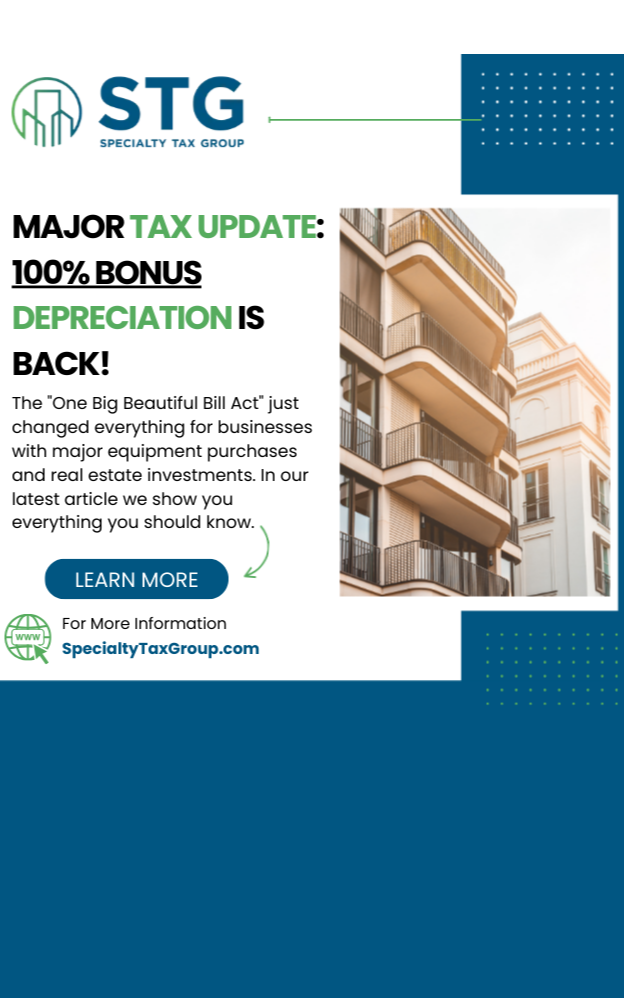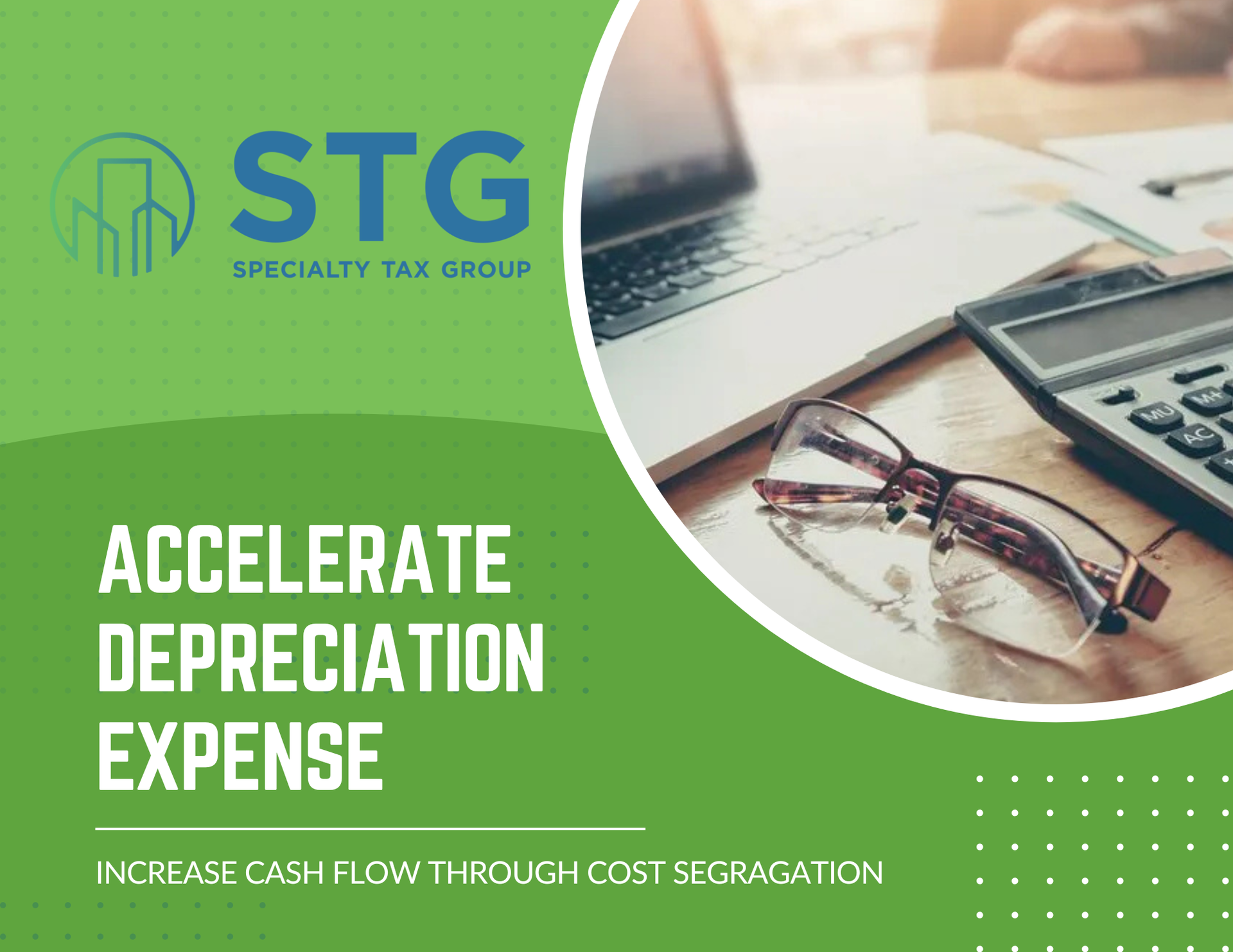This blog post has been researched, edited, and approved by John Hanning and Brian Wages. Join our newsletter below.
What Is Cost Segregation and How Can It Help Real Estate Investors?
Cost segregation is a powerful tax strategy that allows property owners to accelerate depreciation deductions by identifying and reclassifying property components. Geraldine Serrano, Director at Specialty Tax Group, breaks it down in this interview, making a complex topic easy to understand.
What Is a Cost Segregation Study?
A cost segregation study is an engineering-based analysis that breaks down a building into components with shorter depreciable lives—such as carpets, cabinets, and landscaping. Instead of spreading depreciation over 27.5 or 39 years, investors can frontload deductions and reduce tax liability in the early years of ownership.
When Should You Do a Cost Segregation Study?
According to Geraldine, the best time to conduct a cost segregation study is immediately after closing on a property, especially if renovations are planned. This timing allows you to:
- Take advantage of partial asset dispositions
- Separate the “as-is” structure from new improvements
- Maximize bonus depreciation, especially if the property was placed in service between 2017 and 2022 (100%), in 2023 (80%), or in 2024 (60%)
Can You Do a Study on Older Properties?
Yes, but it depends on how far into the depreciation schedule you are. If your commercial property is already 30 years old, or your residential property is 25 years into its schedule, a study might not be worthwhile.
However, if you are 5–10 years into ownership, it is still very possible to benefit significantly.
What Types of Properties Qualify?
Specialty Tax Group performs studies on:
- Residential rentals, including single-family homes, condos, and ADUs
- Commercial buildings such as hotels, offices, warehouses, and mixed-use developments
Unlike many firms that only work on $10 million-plus commercial properties, Geraldine’s team accepts projects with lower thresholds, especially in high-cost states like California.
What Documents Do You Need?
Depending on the situation, here’s what Geraldine and her team usually request:
- Recent acquisitions: Closing statement, appraisal (if available), and any basis allocations
- 1031 exchanges: IRS Form 8824
- Existing properties: Most recent depreciation schedule
- New construction: Itemized construction budget (AIA forms or spreadsheets)
The more information you provide, the more accurate and defensible the report.
What Makes Specialty Tax Group Different?
Not all cost segregation studies are created equal. Geraldine shares examples where other firms underestimated savings due to incomplete analysis. Specialty Tax Group conducts physical inspections, provides audit defense, and delivers detailed breakdowns with court case citations.
One investor with 12 single-family homes faced over $100,000 in tax liability. After a $28,500 study from STG, that amount was nearly eliminated—and the fee was 100 percent tax-deductible.
Do You Work with CPAs?
Absolutely. Geraldine emphasizes collaboration with CPAs to ensure the study supports the client’s overall tax strategy. If your current CPA isn’t familiar with cost segregation, Geraldine can connect you with someone who is.
Common Misconceptions
- You can only do cost segregation on commercial properties
- You need a certain number of rental units to qualify
- Furniture, fixtures, and equipment (FF&E) are included in the study
In reality, residential properties qualify, and FF&E is treated separately since it is not considered part of the real property.
Real-World Example: Hotel Owner Case
A hotel owner initially went with a long-time provider but was disappointed with low results. After comparing the estimates, he returned to Geraldine, whose firm not only met—but exceeded—the projected depreciation values. Since then, he has exclusively worked with Specialty Tax Group.
What’s the Process?
- Intro Call – Understand your goals and whether the study makes sense
- Estimate – Get a quote and projected depreciation breakdown
- Engagement – Sign the letter, pay a 50 percent deposit
- Site Visit – Physical inspection with photos and measurements
- Report Delivery – In 30 days (or faster during tax season)
- CPA Review – Optional meeting with your accountant to review the findings
- Final Payment – Pay the remaining balance upon delivery
Bonus Tip: “Accelerate Before You Depreciate”
Geraldine’s favorite phrase is "Accelerate before you depreciate." It is a reminder that smart planning upfront can create significant tax advantages—especially before key deadlines.
Want a Free Estimate?
Geraldine offers complimentary consultations and estimates to evaluate whether a cost segregation study could reduce your tax burden. If you are buying, renovating, or holding rental properties, this could be the tax strategy you have been missing.
2024 Tax Guide





